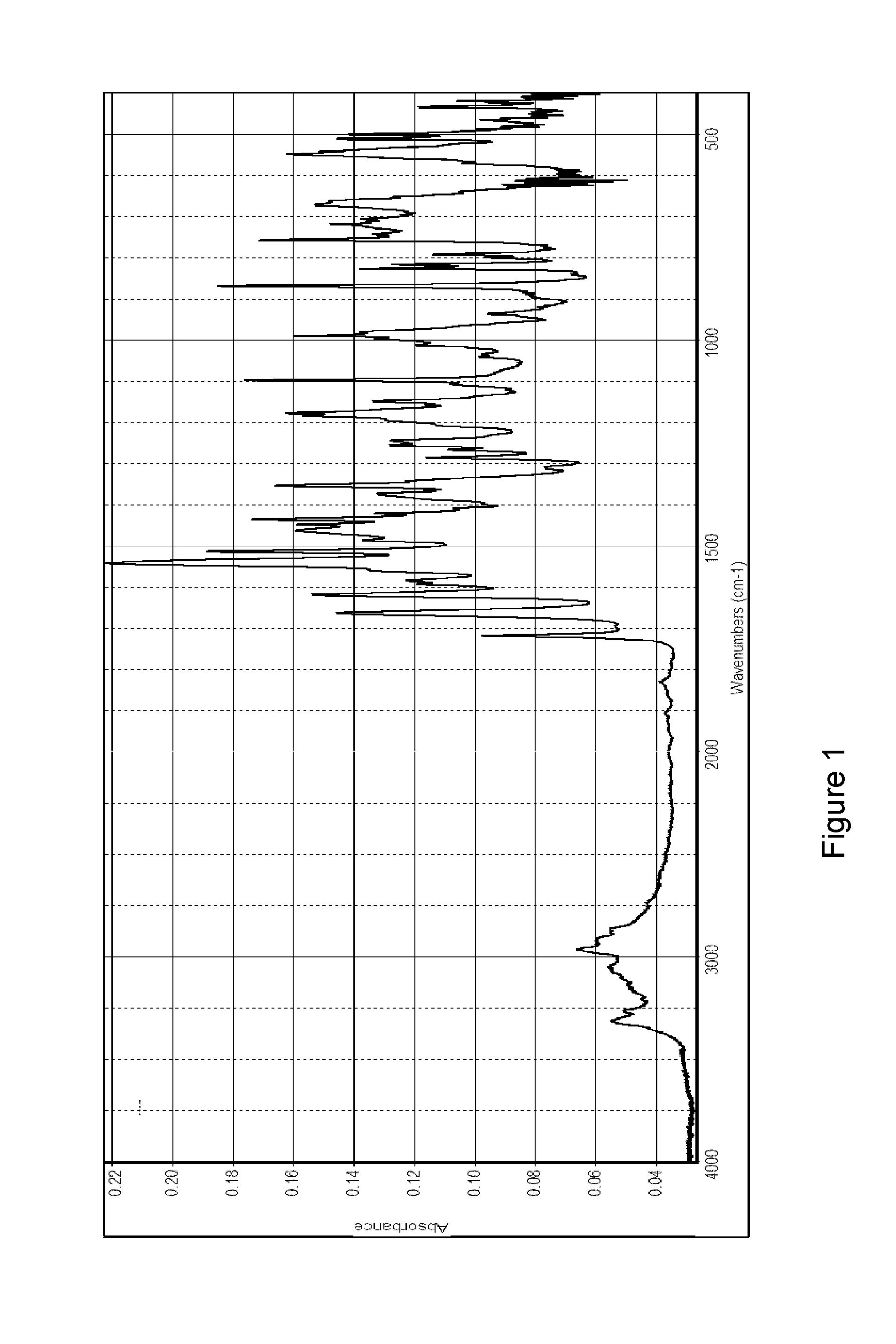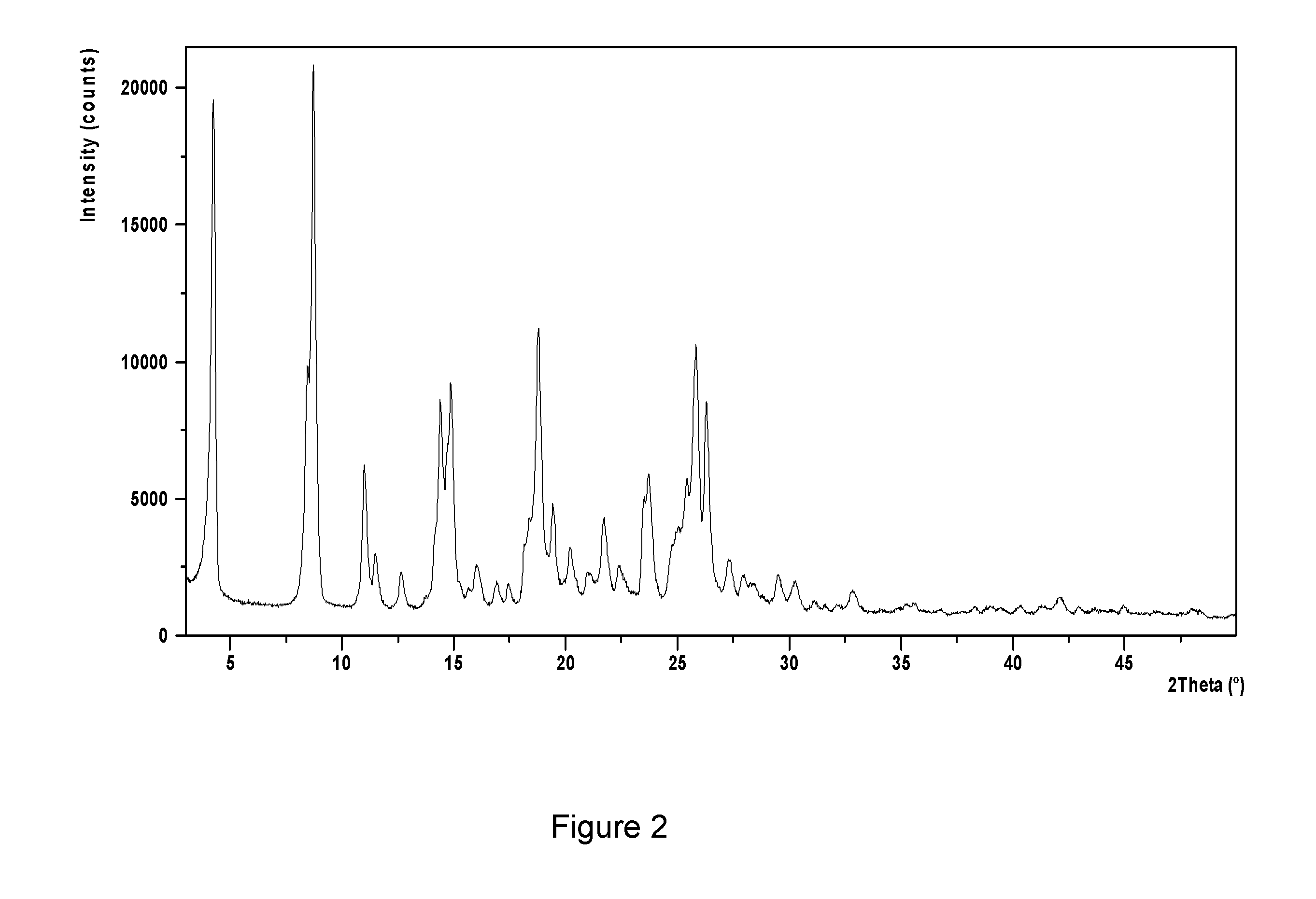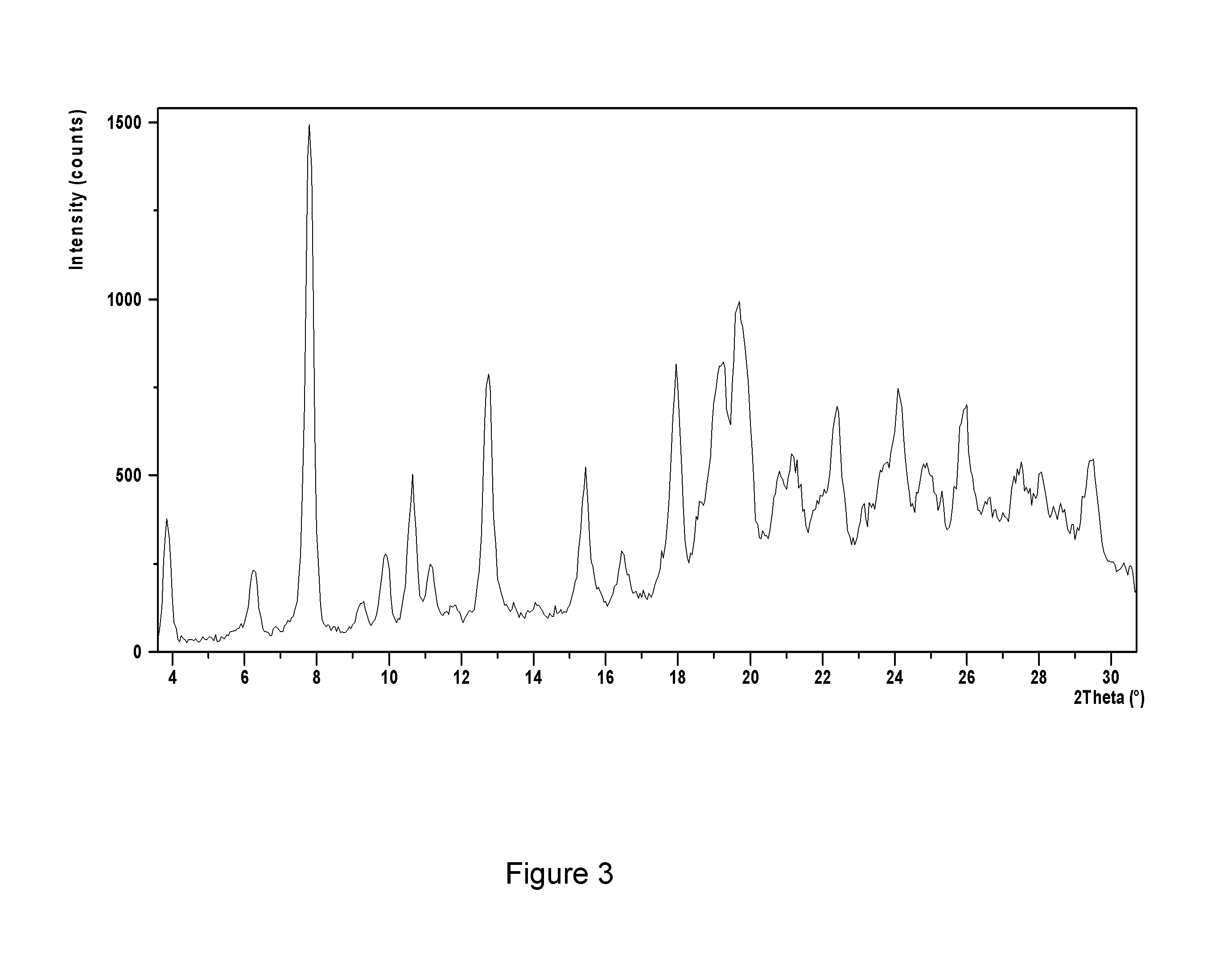INHIBITOR OF p38 MAP KINASE
a kinase and map technology, applied in the field of inhibitors of p38 map kinase, can solve the problems of multiple off-target effects, high toxicity, and the discontinuation of the development of a substantial number of inhibitors
- Summary
- Abstract
- Description
- Claims
- Application Information
AI Technical Summary
Benefits of technology
Problems solved by technology
Method used
Image
Examples
chemistry examples
General Procedures
[0199]All starting materials and solvents were obtained either from commercial sources or prepared according to the literature citation. Unless otherwise stated all reactions were stirred. Organic solutions were routinely dried over anhydrous magnesium sulfate. Hydrogenations were performed on a Thales H-cube flow reactor under the conditions stated.
[0200]Column chromatography was performed on pre-packed silica (230-400 mesh, 40-63 μm) cartridges using the amount indicated. SCX was purchased from Supelco and treated with 1M hydrochloric acid prior to use. Unless stated otherwise the reaction mixture to be purified was first diluted with MeOH and made acidic with a few drops of AcOH. This solution was loaded directly onto the SCX and washed with MeOH. The desired material was then eluted by washing with 0.7 M NH3 in MeOH.
Preparative Reverse Phase High Performance Liquid Chromatography
[0201]Performed using UV detection at 215 and 254 nm with either a Waters X-Select ...
example 1a
1-(3-(tert-butyl)-1-(p-tolyl)-1H-pyrazol-5-yl)-3-(4-((2-((6-ethylpyrazin-2-yl)amino)pyridin-4-yl)methoxy)naphthalen-1-yl)urea
[0205]Intermediate A: 3-tert-Butyl-1-p-tolyl-1H-pyrazol-5-amine
[0206]To a stirred solution of p-tolylhydrazine hydrochloride (100 g, 630 mmol) in EtOH (1251 mL) was added 4,4-dimethyl-3-oxopentanenitrile (88 g, 699 mmol) and HCl (62.5 mL, 750 mmol). The resulting mixture was stirred at reflux overnight. The reaction mixture was cooled to room temperature and concentrated in vacuo to c.a. ⅓ of the original volume. The reaction mixture was then cooled in an ice-bath and taken to c.a. pH 8-9 with 6M aq NaOH. The reaction mixture was extracted with diethyl ether (500 mL) and the organic phase washed with water (2×300 mL) before being dried over magnesium sulphate and concentrated in vacuo to afford an orange solid. The solid was suspended in iso-hexane and stirred at reflux for 2.5 h before being cooled and filtered whilst still hot to yield the subtitle product 3...
example 1b
1-(3-(tert-butyl)-1-(p-tolyl)-1H-pyrazol-5-yl)-3-(4-((2-((6-ethylpyrazin-2-yl)amino)pyridin-4-yl)methoxy)naphthalen-1-yl)urea (different batch)
[0217]1-(3-(tert-Butyl)-1-(p-tolyl)-1H-pyrazol-5-yl)-3-(4-((2-((6-ethylpyrazin-2-yl)amino)pyridin-4-yl)methoxy)naphthalen-1-yl)urea (10.0 g) was stirred in acetonitrile (770 mL) at 22° C. The heterogeneous mixture was warmed to reflux temperature at a rate of 3° C. / min and reflux was maintained for 2.5 h. The mixture was seeded with crystalline 1-(3-(tert-butyl)-1-(p-tolyl)-1H-pyrazol-5-yl)-3-(4-((2-((6-ethylpyrazin-2-yl)amino)pyridin-4-yl)methoxy)naphthalen-1-yl)urea (100 mg). The mixture was linearly cooled to 20° C. over 18 h then again heated to reflux temperature and refluxed for 2 h then linearly cooled to 22° C. over 18 h. The solid product was filtered, washed with acetonitrile (77 mL) and dried for 18 h at 45° C. in vacuo to give 1-(3-(tert-butyl)-1-(p-tolyl)-1H-pyrazol-5-yl)-3-(4-((2-((6-ethylpyrazin-2-yl)amino) pyridin-4-yl)methoxy...
PUM
| Property | Measurement | Unit |
|---|---|---|
| Pharmaceutically acceptable | aaaaa | aaaaa |
Abstract
Description
Claims
Application Information
 Login to View More
Login to View More - R&D
- Intellectual Property
- Life Sciences
- Materials
- Tech Scout
- Unparalleled Data Quality
- Higher Quality Content
- 60% Fewer Hallucinations
Browse by: Latest US Patents, China's latest patents, Technical Efficacy Thesaurus, Application Domain, Technology Topic, Popular Technical Reports.
© 2025 PatSnap. All rights reserved.Legal|Privacy policy|Modern Slavery Act Transparency Statement|Sitemap|About US| Contact US: help@patsnap.com



